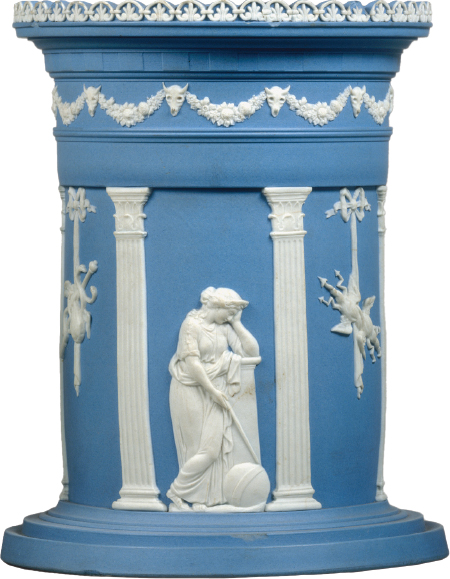Individuals in Society: Josiah Wedgwood

As the making of cloth and iron was revolutionized by technical change and factory organization, so too were the production and consumption of pottery. Acquiring beautiful tableware became a craze for eighteenth-
The twelfth child of a poor potter, Josiah Wedgwood (1730–
In 1759, after five years of tireless efforts, Wedgwood perfected a beautiful new green glaze. Now established as a master potter, he opened his own factory and began manufacturing teapots and tableware finished in his green and other unique glazes, or adorned with printed scenes far superior to those being produced by competitors. Wedgwood’s products caused a sensation among consumers, and his business quickly earned substantial profits. Subsequent breakthroughs, including ornamental vases imitating classical Greek models and jasperware for jewelry, contributed greatly to Wedgwood’s success.

Competitors were quick to copy Wedgwood’s new products and sell them at lower prices. Thus Wedgwood and his partner Thomas Bentley sought to cultivate an image of superior fashion, taste, and quality in order to develop and maintain a dominant market position. They did this by first capturing the business of the trendsetting elite. In one brilliant coup, the partners first sold a very large cream-
Above all, once Wedgwood had secured his position as the luxury market leader, he was able to successfully extend his famous brand to the growing middle class, capturing an enormous mass market for his “useful ware.” Thus when sales of a luxury good grew “stale,” Wedgwood made tasteful modifications and sold it to the middling classes for twice the price his competitors could charge. This unbeatable combination of mass appeal and high prices all across Europe brought Wedgwood great fame and enormous wealth.
A workaholic with an authoritarian streak, Wedgwood contributed substantially to the development of the factory system. In 1769, he opened a model factory on a new canal he had promoted. With two hundred workers in several departments, Wedgwood exercised tremendous control over his workforce, imposing fines for many infractions, such as being late, drinking on the job, or wasting material. He wanted, he said, to create men who would be like “machines” that “cannot err.” Yet Wedgwood also recognized the value in treating workers well. He championed a division of labor that made most workers specialists who received ongoing training. He also encouraged employment of family groups, who were housed in company row houses with long, narrow backyards suitable for raising vegetables and chickens. Paying relatively high wages and providing pensions and some benefits, Wedgwood developed a high-
QUESTIONS FOR ANALYSIS
- How and why did Wedgwood succeed?
- Was Wedgwood a good boss or a bad one? Why?
- How did Wedgwood exemplify the new class of factory owners?

ONLINE DOCUMENT PROJECT
How did observers of early industrialization imagine the relationship between workers and their work, and between workers and their employers?
Explore different views on the impact of industrial production on individual workers in light of Wedgwood’s approach to industrial labor. Then complete a writing assignment based on the evidence and details from this chapter.
See Document Project for Chapter 20.